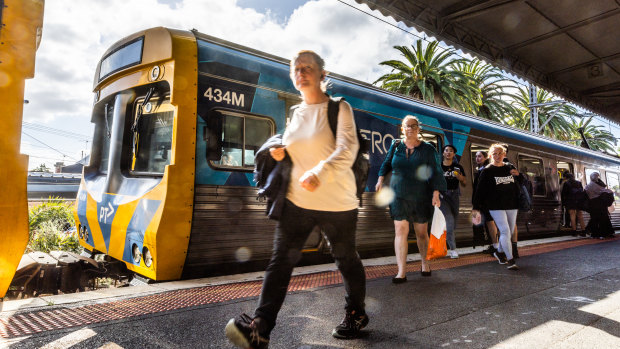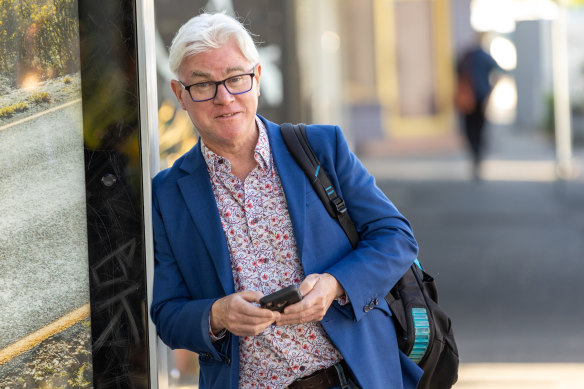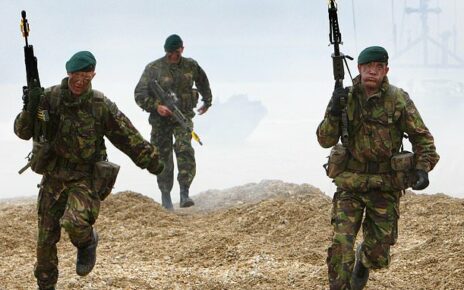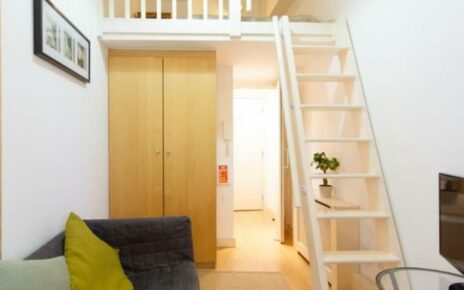Passengers at some of Melbourne’s busiest suburban train stations in the city’s north and west are waiting twice as long for trains as those using the best-served rail lines through the eastern and south-eastern suburbs.
Data released by the Department of Transport and Planning last week shows that Footscray, South Yarra, Richmond, Caulfield and Box Hill had the most passengers outside city-centre stations in the 12 months to June 30, 2022.
Essendon station is one of the busiest, but passengers face long waits between trains.Credit:Jason South
But a large divide exists across Melbourne’s network of 220 suburban stations, as trains are only stopping every 30 or 40 minutes at busy stations in northern and western suburbs, including Essendon, Sunshine, Williams Landing and Newport, outside peak hour, at night and on the weekend.
Trains from Frankston station, the 19th busiest, run roughly twice as often outside peak hour as from Essendon station, despite Essendon being the 14th busiest station and sitting on the growing Craigieburn line, an analysis of timetables shows.
The Frankston line runs every 10 minutes through the day and on weekends.
It benefited from $2 billion in upgrades that the Andrews government pledged ahead of the 2018 state election, in which three ultra-marginal seats along the rail corridor were fiercely contested.
Meanwhile, the Sunbury and Werribee lines, which run through Sunshine (the sixth-busiest station), Watergardens (25th) and Williams Landing (22nd), also have 20 and 30-minute gaps between off-peak trains.
A booming population in the outer western suburbs has also catapulted three stations – Tarneit (21st), Wyndham Vale (47th) and Melton (51st) – into the list of Melbourne’s busiest, despite them still being served only by V/Line trains running every 40 minutes on weekends.
The best-serviced stations are those with several lines running through them, such as Caulfield, which has trains from Cranbourne, Pakenham and Frankston stopping there every five minutes.
Public Transport Users Association spokesman Daniel Bowen said Melbourne’s train network was infrequent compared with those in similar global cities, with even Sydney and Perth running their services at least every 15 minutes all day.
“People don’t like to live their life around a train timetable: if they see the train only runs every 30 or 40 minutes, they’re likely to just jump in the car and drive,” Bowen said.
“A lot of big cities … run frequencies every 10 minutes. So Melbourne should absolutely be looking at how we can run more trains, more often, every day of the week.”
Peter Ewer catches the train from either Essendon or Moonee Ponds station as part of his daily commute to Broadmeadows, but first he gets a bus from Brunswick – and that doesn’t always align with the train timetable.
He said more frequent services would cut down on the time he wasted waiting for the next service.
“When it takes more than an hour to travel 14 kilometres in the city, public transport doesn’t compete very well with cars,” Ewer said.
Peter Ewer rides from Essendon or Moonee Ponds daily, and says more frequent trains would benefit everyone.Credit:Jason South
Victoria was close to introducing more frequent services across the network a decade ago. In 2012, Public Transport Victoria publicly outlined a plan to upgrade services to Craigieburn and Sydenham (now Watergardens) every 10 minutes in the off-peak period within four years.
The opening of the Metro Tunnel in 2025, consisting of four new city underground stations, will connect the Sunbury lines to the Cranbourne/Pakenham lines. The state government says this will allow for 60 per cent more peak capacity from Sunbury, while freeing up space for other lines into the city.
A Department of Transport spokesperson said it was investigating how to increase services to the Craigieburn area, and continually reviewed how the network operated to ensure access to service.
Service frequency reflected demand across a whole line rather than individual stations, the spokeswoman said, with the Frankston line currently carrying about 7 per cent more passengers than the Craigieburn line and 12 per cent more than the Sunbury line.
Public Transport Minister Ben Carroll said the Andrews government had introduced more than a thousand new services a week since it won government in 2014 and was delivering “vital infrastructure upgrades and working to increase public transport services” in Melbourne’s north.
City of Hume Mayor Joseph Haweil, whose council takes in rapidly growing areas around Craigieburn, Mickleham and Kalkallo, said 92 per cent of residents drove to work because of a lack of public transport.
“The Metro Tunnel will allow more trains to service both the Craigieburn and Upfield lines, but it’s time we look at other solutions we can implement now,” he said. “Greater availability of public transport options is critical.”
Infrastructure Victoria, the state government’s independent adviser, has also called for more frequent services on the Craigieburn and Upfield lines to serve growing populations centres in the city’s outer north.
Bowen said services outside the weekday morning and afternoon peak had become more important after the COVID-19 pandemic, which had changed work and travel patterns.
The Age revealed this week that public transport demand is back to 89 per cent of pre-pandemic numbers on weekends, but still only 72 per cent on Mondays and Fridays, while major road traffic is almost back to 2019 levels.
The Morning Edition newsletter is our guide to the day’s most important and interesting stories, analysis and insights. Sign up here.
Most Viewed in National
From our partners
Source: Read Full Article



